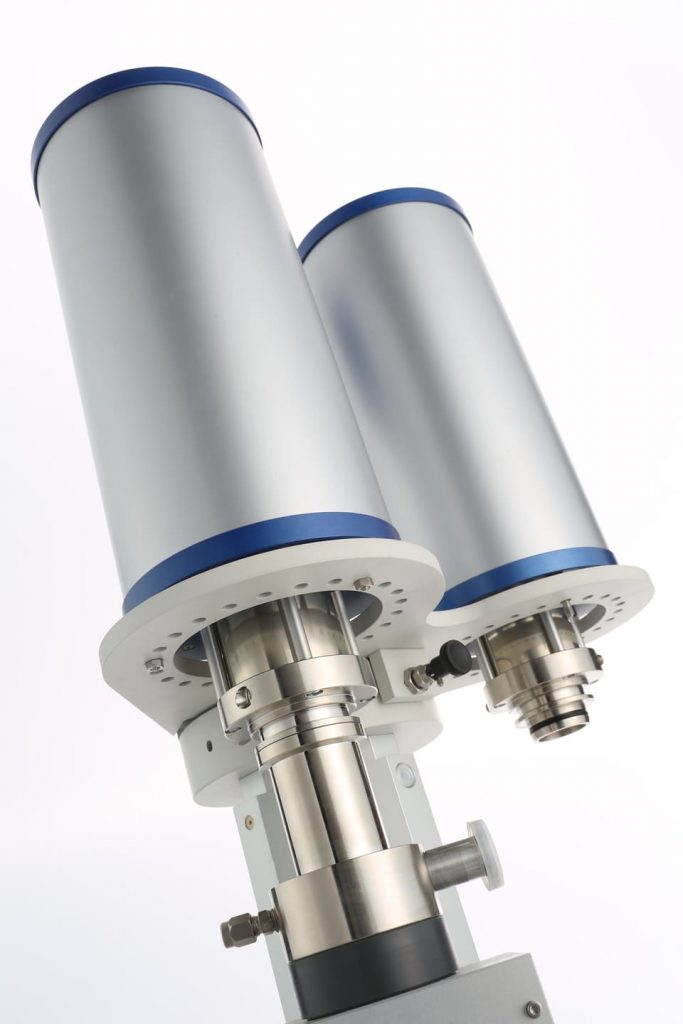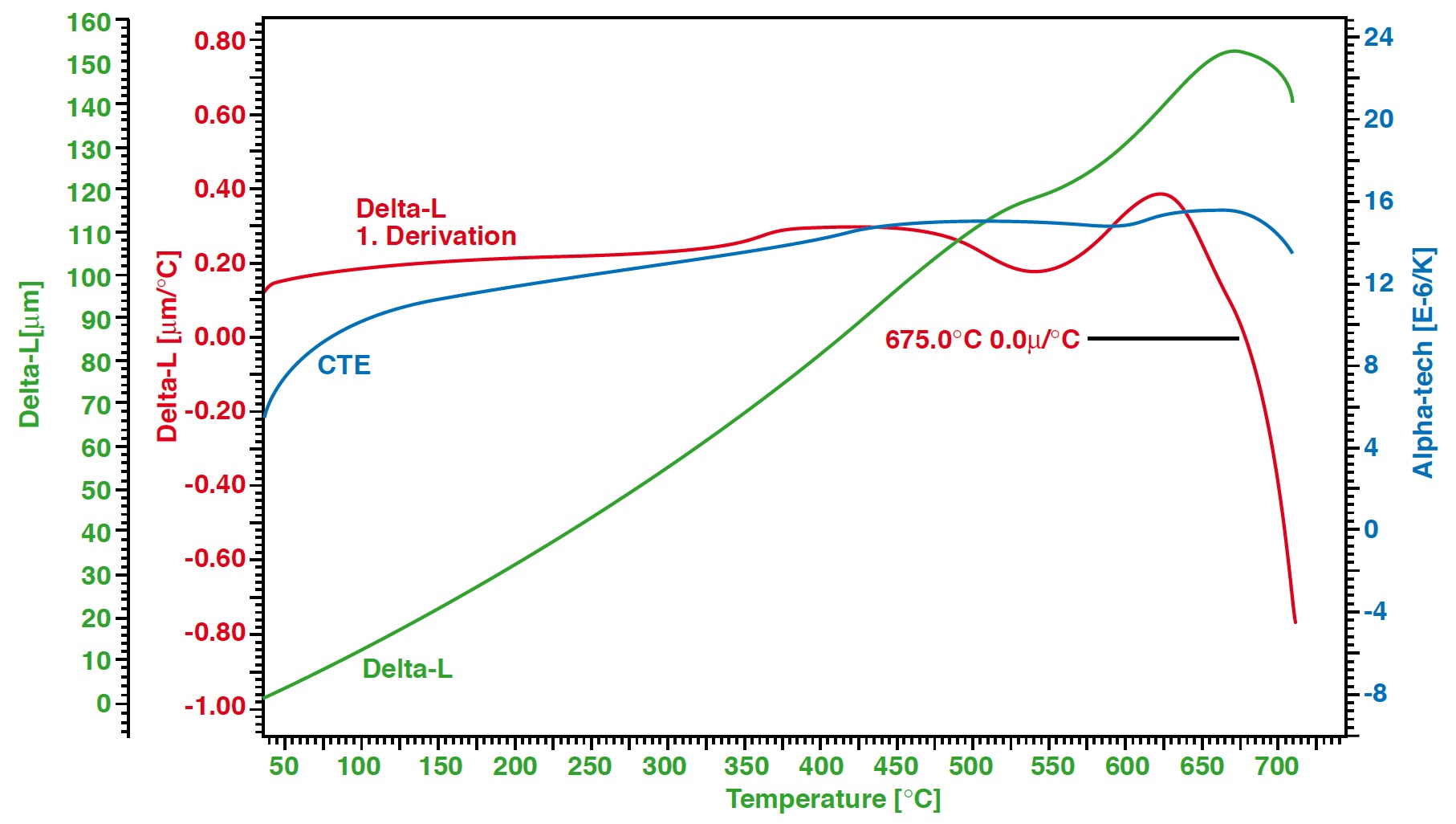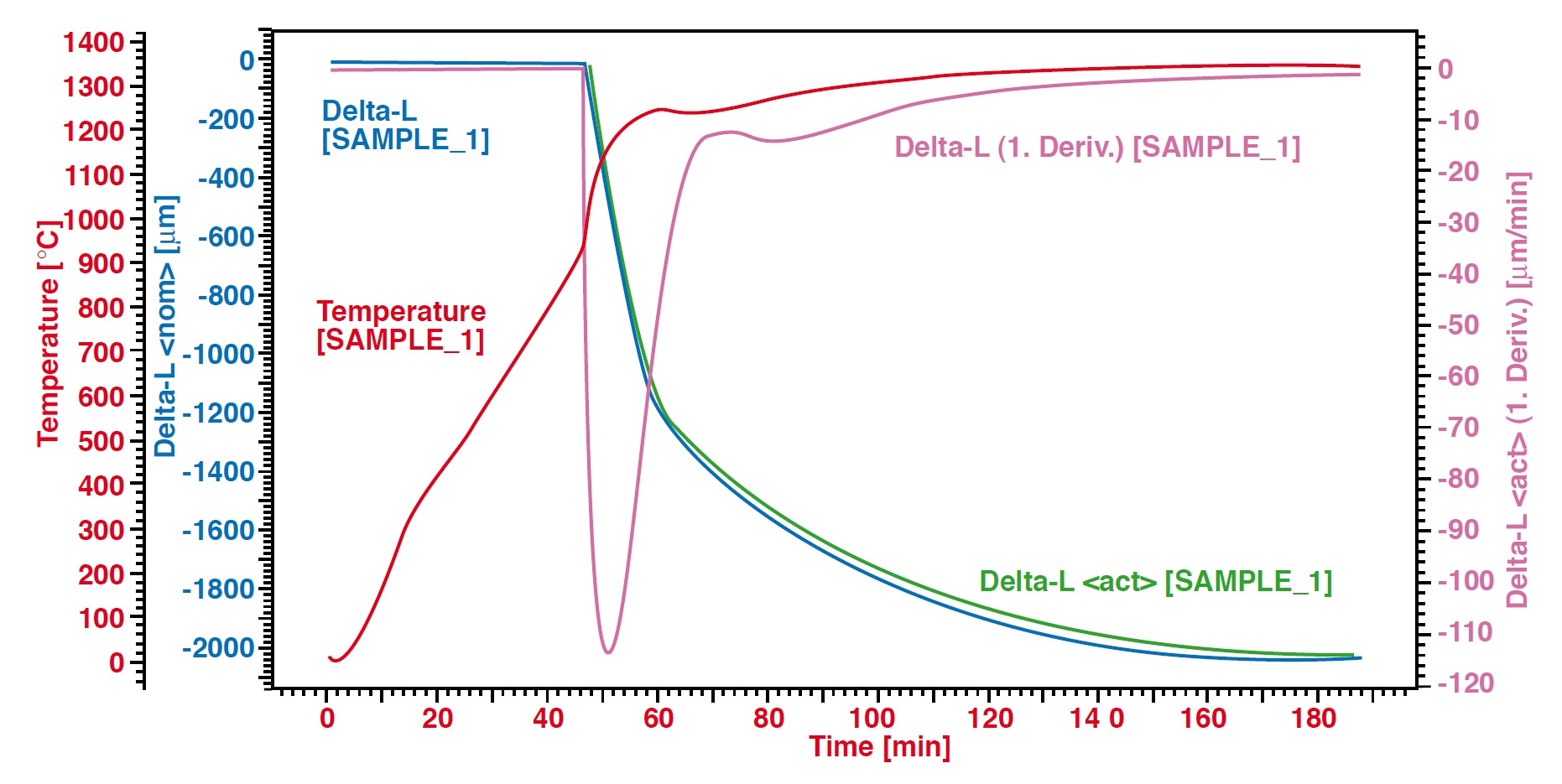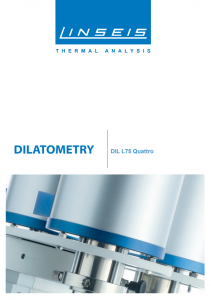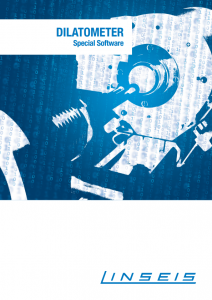DIL L75 PT Quattro-Dilatometer
Quattro-dilatometer – 4 samples in one run
Description
On point
The LINSEIS L75 PT Quattro-Dilatometer is a very unique instrument, which was developed for customers which have to deal with a large amount of samples. The Quattro-Dilatometer is built up with four separate dilatometer measuring sensors, which can measure simultaneously either four separate samples at one time, or three separate samples against a reference standard.
That means, the productivity of the Quattro-Dilatometer is three times as high as compared to the normally used dual push rod dilatometers. With a dual push rod dilatometer only one sample can be measured against the standard at each time.
Another feature included in this Quattro Dilatometer is an automatic furnace lift mechanism. This feature automatically lifts the furnace at the end of each measurement without any operator interaction.
This allows the user to insert new samples while the furnace is still cooling down, when a second or third furnace is mounted on the system the sample throughput can be even further increased significantly.
The Quattro-Dilatometer uses a unique amplifier with automatic zero setting for all four samples. Furthermore there is a “manual push rod speed release” for each sample. With this feature all four samples can easily be changed and seated correctly for high accuracy measurements.
We are proud to say that as far as we know Linseis is the only supplier worldwide, that can offer this highly specialized dilatometer. This is another example of our powerful line of thermal analysis instruments.
You are interested in a Quattro DIL?
You need more information?
Contact our application experts!
Specifications
| Model | DIL L75 PT QUATTRO* |
|---|---|
| Temperature range: | -180°C up to 500/700/1000°C RT up to 1000/1400/1600/1750/2000/2400/2800°C |
| Price range: | $$ |
| Heating/cooling rates: | 0.01 K/min … 50 K/min (dependent on furnace) |
| Sample holders: | fused silica Al2O3 <1750°C |
| Sample length: | max. 50 mm |
| Sample diameter: | max. 7 mm |
| Measuring range: | 500/5000 µm |
| Resolution: | 0.125 nm |
| Atmospheres: | inert, oxidizing, red., vac., static/dynamic |
| Electronics: | Integrated |
| Interface: | USB |
*Specs depend on configurations
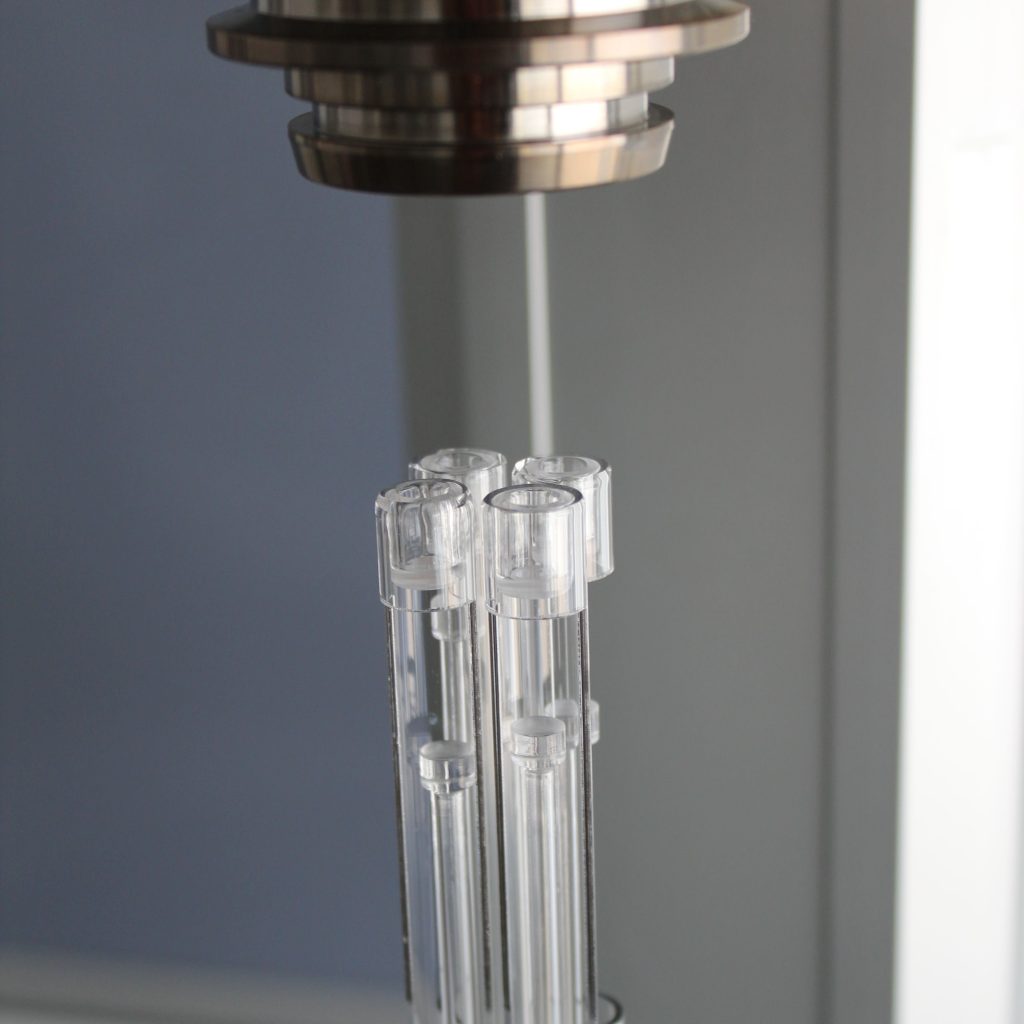
four separate dilatometer measuring sensors
Furnace & Acessories
Furnace options:
- L75V 500LT -180°C up to +500°C
- L75V 700LT -180°C up to +700°C
- L75V 1000LT -180°C up to +1000°C
- L75V 1000 RT up to 1000°C
- L75V 1400 RT up to 1400°C
- L75V 1550 RT up to 1600°C
- L75V 1750 RT up to 1750°C
- L75V 2000 RT up to 2000°C
- L75V 2400 RT up to 2400°C
- L75V 2800 RT up to 2800°C
Acessories:
- Sample preparation devices
- Different types (designs/materials) of sample holders
- Vernier calipers for online input of the sample length
- Selection of Gas Boxes for up to 4 gases
- Different rotary and turbomulecolar pumps
Software
All LINSEIS thermo analytical instruments are PC controlled. The individual software modules exclusively run under Microsoft® Windows® operating systems. The complete software consists of 3 modules: temperature control, data acquisition and data evaluation. The 32 bit software incorporates all essential features for measurement preparation, execution, and evaluation of a Dilatometer measurement. Thanks to our specialists and application experts, LINSEIS was able to develop comprehensive easy to understand user friendly application software.
DIL-Features
- Glass transition and softening point evaluation
- Softening point detection with automatic software controlled system shut down
- Display of relative/absolute shrinkage or expansion curves
- Presentation and calculation of technical / physical expansion coefficient
- Rate Controlled Sintering (RCS) Software
- Sinter process evaluation
- Semiautomatic evaluation functions
- Several system correction features
- Automatic zero point adjustment
General Features
- Program capable of text editing
- Data security in case of power failure
- Thermocouple break protection
- Repetition measurements with minimum parameter input
- Evaluation of current measurement
- Curve comparison up to 32 curves
- Storage and export of evaluations
- Export and import of data ASCII
- Data export to MS Excel
- Multi-methods analysis (DSC TG, TMA, DIL, etc.)
- Zoom function
- 1 and 2 derivation
- Programmable gas control
- Statistical evaluation package
- Free scaling
Applications
Application example: Glass Ceramic
The dilatometric method is an excellent method to determine the thermal expansion (CTE) and the softening point of glass ceramic materials. Besides the absolute expansion and the expansion coefficient (CTE) you can find the first derivative of the absolute expansion. Where the first derivative goes through zero you can determine the max. of the thermal expansion and thus the softening point of the material.
Application example: Ceramics / Powder metallurgy
In production processes of high-tech ceramics a simulation of sinter processes is of high interest. When using the optional software package RCS (rate controlled sintering) it is possible to program controlled sintering with a dilatometer as per PALMOUR III theory. The following application is a sintering process of ZrO2. Here the final density of 100% is achieved. The initial heating rate decreases as the final density is reached.


